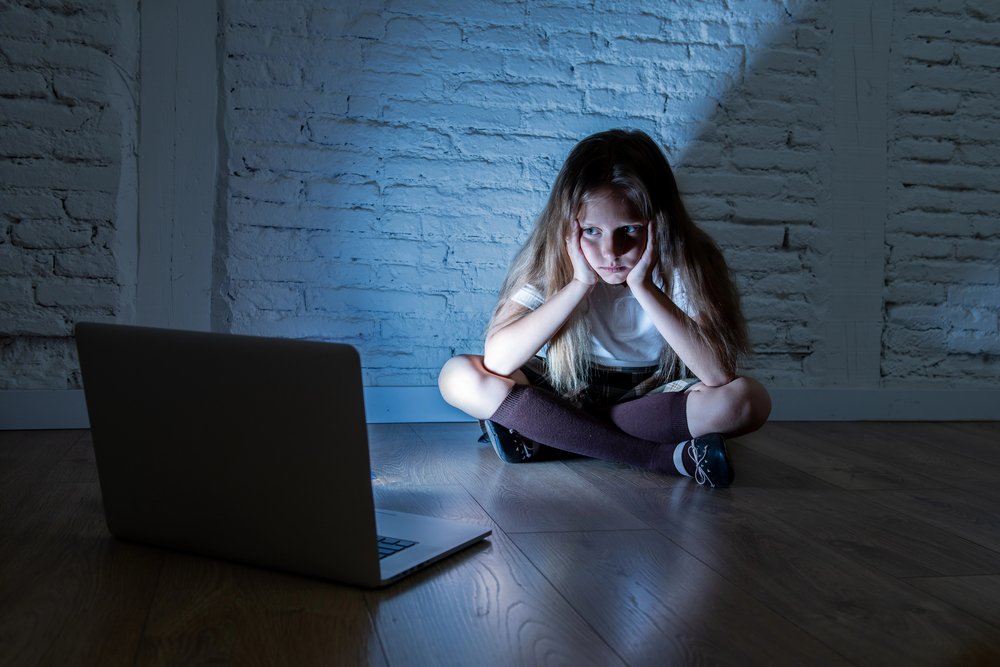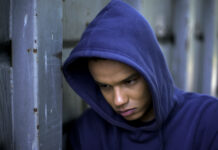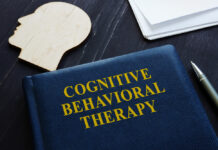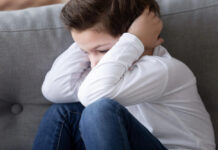A new article published in Nature Scientific Reports finds that childhood adversity is strongly associated with severe psychological distress in Japanese adults. The current research, headed by Natsu Sasaki from the University of Tokyo, also shows evidence that exposure to multiple types of Adverse Childhood Experiences (ACEs) dramatically increases the odds of experiencing severe psychological distress as an adult.
“This study presented the high prevalence of expanded ACEs in Japan and its strong impact on mental health in adulthood,” the authors write. “The prevalence of severe psychological distress increased as the number of ACEs increased. The highest prevalence of high distress was observed in those with ACEs over 4 in ages 18–34 years old.”
 The goal of the current work was to explore the relationship between childhood adversity and severe psychological distress in Japanese adults. The researchers recruited participants from a database maintained by Rakuten Insight, Inc., a private company that compiled sociodemographic information on 2.2 million people in Japan. The authors invited participants who were representative of the overall Japanese population in terms of sex, age, and prefecture category to complete an online survey.
The goal of the current work was to explore the relationship between childhood adversity and severe psychological distress in Japanese adults. The researchers recruited participants from a database maintained by Rakuten Insight, Inc., a private company that compiled sociodemographic information on 2.2 million people in Japan. The authors invited participants who were representative of the overall Japanese population in terms of sex, age, and prefecture category to complete an online survey.
Participants who provided artificial or unnatural responses were excluded. This included participants who chose all positives in a question about illicit drug use, participants who chose all positives in a question about having chronic diseases, and participants who could not correctly answer the prompt “Please choose the second from the bottom.” In total, the researchers analyzed data from 28,617 Japanese adults.
Childhood adversity was measured using the ACE-J, a Japanese-specific assessment similar to the CDC-Kaiser ACE questionnaire. The ACE-J includes five categories that the CDC-Kaiser ACE questionnaire does not (childhood poverty, overcontrol, school bullying, hospitalization due to chronic illness, and exposure to life-threatening natural disasters). In addition to the five categories already mentioned, the ACE-J also assesses parental death, parental divorce, mental illness in the household, substance abuse in the household, mother treated violently, physical abuse, physical neglect, emotional abuse, emotional neglect, and sexual abuse. Participants were asked to respond yes or no to experiencing each category before age 18.
Psychological distress was measured using the Kessler Psychological Distress Scale (K6). Participants are asked six questions about their experiences of psychological distress over the past 30 days. They respond on a 5-point scale, with 0 indicating they have the corresponding experience “none of the time” and four indicating they have the corresponding experience “all the time.” A score over 13 indicates severe psychological distress.
Participants were also asked about demographic characteristics, including age, sex, educational attainment, marital status, household income, and working status.
The average age of participants was 48. Most participants were married (62%) and had paid work (65%)—the most common level of educational attainment was a bachelor’s degree (46%). The mean number of ACE categories was 1.75. 14.7% of participants reported four or more ACEs. 10.4% of participants scored 13 or higher on the K6, indicating severe psychological distress.
The most commonly reported ACE categories were emotional neglect (38.5%), childhood poverty (26.3%), and school bullying (20.8%). Parental death (10.8%) and divorce (10.7) were experienced by nearly 11% of participants. Other ACE categories ranged from 8.7% (mother treated violently) to 3.2% (physical neglect). 25.5% of participants reported no ACE. 35.5% reported 1 ACE category, 15.6% reported 2, 8.8% reported 3, and 14.7% reported four or more.
When adjusted to correct for demographic categories, every type of ACE was associated with increased odds of severe psychological distress in adulthood. Parental death (1.23 times increased odds), divorce (1.28), and emotional neglect (1.98) were the ACEs least associated with these increased odds. Physical neglect (4.01), overcontrol (3.79), and physical abuse (3.65) were the most associated ACEs.
Mental illness in the household (2.57), substance abuse in the household (2.56), mother treated violently (2.40), childhood poverty (2.14), hospitalization due to chronic disease (2.33), and natural disaster (2.57) were linked to a more than doubling of the odds of experiencing severe psychological distress as an adult.
Emotional abuse (3.49), sexual abuse (3.14), and school bullying (3.04) were linked to more than tripled odds of severe psychological distress in adulthood.
Reporting multiple ACE categories was strongly associated with severe psychological distress, with each additional category increasing the likelihood. Those reporting 1 ACE category were 2.16 times more likely than those reporting none to have severe psychological distress in adulthood. That risk increased to 3.04 times more likely at 2 ACE categories, 4.32 at 3 ACE categories, and 8.54 at four or more ACE categories.
The authors acknowledge several limitations to the current work. The online nature of the study may attract participants with specific traits and limit generalizability. The self-report nature of the survey could lead to data errors due to participants misremembering, especially older participants who are more removed from the experiences in question. Participants from different generations could have different definitions of terms like “school bullying.”
Many factors that could affect psychological distress in adults were not measured. The number of participants excluded for unnatural response patterns was abnormally high, meaning genuine participants may have been excluded by mistake. This study does not ask about the age at which the participants experienced adversity, which could be an important factor. Additionally, as the research was conducted entirely within Japan, generalizability to other populations is limited.
The authors conclude:
“This study showed the cumulative negative impacts of expanded ACEs on psychological distress in Japanese adults, as well as individual adversities. A previous study suggested that a 10% reduction in ACE prevalence could equate to annual savings of 3 million DALYs or $105 billion. Primary prevention, or preventing children from having ACEs, is urgent action for public mental health.”
ACEs can have lifelong health consequences. Research has linked ACEs to depression, ADHD, psychosis, suicide, and death in early adulthood. ACEs have also been linked to poor sleep, lower academic achievement, and emotional/behavioral problems in children and adolescents. One study estimates that 25% of mental health disorders can be attributed to childhood maltreatment. Childhood adversity may also change stress-related gene expression.
****
Sasaki, N. et. al. (2024). Effects of expanded adverse childhood experiences, including school bullying, childhood poverty, and natural disasters, on mental health in adulthood. Scientific Reports 14(1). (Link)















Children who experience serious and/or chronic adverse experiences are usually too young to process it in a way that doesn’t compound the trauma, so the feelings surrounding it are diverted to the unconscious, which isn’t necessarily a bad thing, as this protects the conscious mind from being overwhelmed by situations too painful to face (process) in the present.
But traumatic memories have a way of erupting in adulthood, as long-suppressed feelings at some point usually demand some form of expression that is sometimes helpful, and sometimes not.
But this is not a pathological process either way, and both helpful and unhelpful expression deserve to be respected for what they are: ways of coping with buried feelings.
Report comment
The thing is that much social trauma goes completely under our radar because we naturalize and normalize it, and see it as part of the normal life course. We destroy the natural qualities of children by telling them they should not be what they are, they should be something other then they are. We call them derogatory words like naughty and greedy and rude. We don’t understand their behaviour but judge and try to control it, so obviously, inevitably, we distort their nature, their natural qualities, their natural instincts, their natural healing mechanisms, and estrange them more and more from themselves. This is socially conditioned, socially instituted social violence through the agency of the parents. Through it, we attempt to make our children what society wants us to be rather then allow them to be what they are. This is ubiquitous social trauma and the basis for the development of the ego.
All nature is health. Health is nature. All natural creatures know health which is another word for harmony. Social history, or social and historical accumulation, in the form of civilization and thought, is the only other to nature. It’s the only thing that made human beings divided between nature and the demands of the social-historical totality via the socially conditioned mind. So we are all mentally and emotionally sick with our social conditioning and it’s deleterious effects on our emotions, it’s traumatising effects on the body, and it’s perverting effects on our appetites and instincts.
However, the rate of severe trauma is very much higher in people who have serious psychological struggles, and addiction shouldn’t be regarded as seperate to what we call mental health problems, and neither should criminality. They are all damaged chidren in this violent, loveless society which, having produced them, we blame on themselves under the illusion of self-responsibility. The whole universe made me and remakes me in each successive instant. How can I be responsible for myself? How can I even act? The Universe is making me what I am in every instant therefore it is the Universe acting, not me. Thought creates the illusion of a person doing it, that’s all. Everything just happens. Everything. No-one doubts that animals and very young children just happen. We call that freedom. When we imagine it ourselves, we think of that as perfect unfreedom, determinism. But that’s because we have made such miserable social and psychological conditions for ourselves. No-one would mind being a machine if they were a creative machine, and a love machine. When life is the self-expression of creativity and love you won’t need the psuedo-freedom of choice and agency. Life would be explosive creativity and love, involuntarily, compulsively, necessarily. A bit like ideal sex. Would you want free choice in the middle of such sex? Then why imagine it is freedom in life? When you see clearly there is no thought process called ‘choice’ anyway.
Report comment
I’ll tell you a secret. You know how you feel like you are so bored that you feel like you are dying, or you are so dissatisfied with the world that your heart feels like it’s gauged with acid and you feel like your skin is lancing with black pain, or when you are so lustful or desirous that you feel like exploding like a nuclear bomb? Well the Western response is to react or indulge this tension away, but if you realize that to burn in the black flames of boredom, disatisfaction and lust is, if you can bare it, a recipe for a creative explosion that will transform your life and consciousness and take it to another level. The same is also true with the emotional energy tied up into what we call traumatic complexes, and this is the same kind f energy behind what they call psychosis. Psychosis can liberate creative energy and freedom in exactly the way LSD can if we understand it. The emotional negativity generated by a dissatisfactory social existence is the creative energy of life that has been constrained, thwarted, and is yearning for expression and realization. You all recognize the truth of this on some level. The spirit that recognizes and surges at such recognition is that which demands this satisfaction, and it can only operate in freedom, free of control. This we call ‘creativity’. ‘Invention’ is an intellectual imitation of this process and not the same thing. So let out your black, purple, yellow, blue and red arrows. And shoot the world with your black songs. Let your trauma explode into multicoloured fireballs scorching the Earth and warning of the poetic revolution in consciousness and life. Cuz there aint noffink else to do besides this pre-programmed death we call ‘civilization’ and it’s agency in your head called ‘me’.
Apologies – it’s not my fault Mad in America attracts mad people. Perhaps they should call themselves Mad America. That would be more true wouldn’t it. This is what I am saying. In what we call mental illness is the negative imprint of society, and therefore the negative truth of the positive society. That positive society IS this madness, and those that start to realize this – including all you and all the mentally ill who read this – are those of us who are waking up to sanity through trauma, i.e. the truth of a cruel and violent social process through the agency of parents, teachers, police people and psychiatrists.
Report comment
Tea cups and fairy cakes became popular in 16th century England and if you examine it them they are made to look excatly like 16th century bosoms. If bosoms were decorated the same we’d probably eat and drink them at 11 a.m. That’s why they are considered home comforts. We all ate and drank from bosoms once you know. I want a Lesbian Teacup Matchstick Breast, a Lesbian Teacup Backflip Breast. Oops – sorry – I thought I was dreaming of doing my homework. Maybe I’m replying to Mad in America. World, are you real?
Report comment